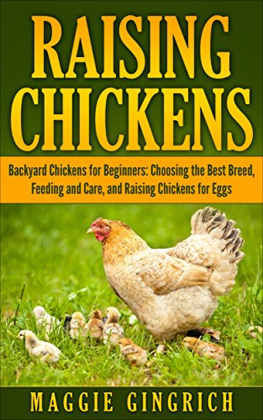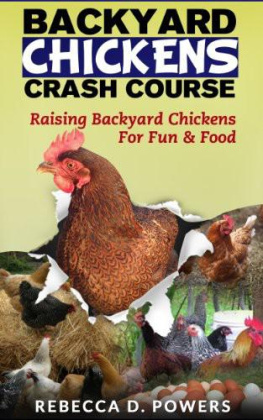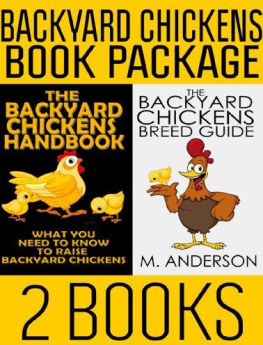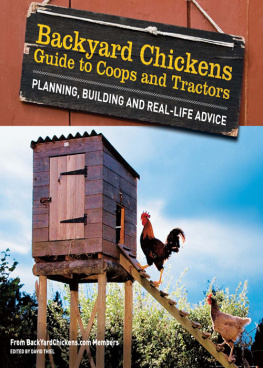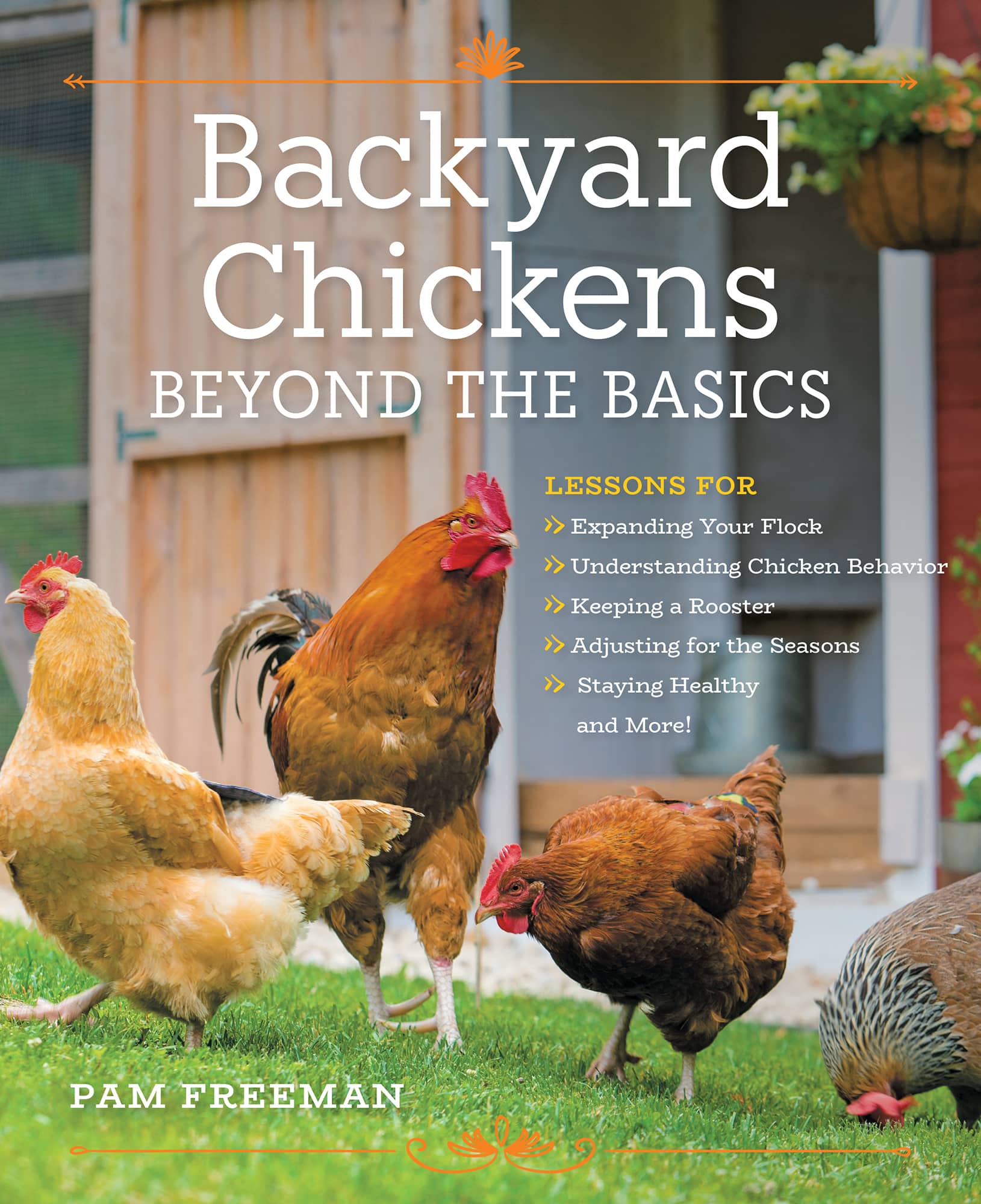Backyard
Chickens
BEYOND THE BASICS
PAM FREEMAN

INTRODUCTION
I grew up hearing many stories from family members who raised chickens, but I never gave them much thought until I moved to the country with my own family. My husband had grown up in a household that kept chickens, and he thought it would be good for our kids if we added chickens to our new backyard. I did a lot of research, and then one day the Easter Bunny came along and surprised us with our first flock! Those chicks were a big hit. They grew to be happy and healthyand we all loved the rich, flavorful taste of their eggs. Our backyard has been full of chickens ever since.
My chicken-keeping journey soon brought my career full circle, as I decided to combine my degree in journalism with my passion for chicks. I started a blog documenting the goings-on in my backyard and then began writing for the website of Backyard Poultry magazine. I eventually moved into a position where I fielded Ask the Expert questions.
The inspiration for Backyard Chickens: Beyond the Basics came from those questions. Although each query was a bit different, I noticed common themes running through all of them. Because my position requires constant research, I started to see the need for a book like this. There were plenty of beginner books that show people how to get started, and there were a few higher-level books that talk extensively of health, but there was nothing in the middle. Thats where so many of the Ask the Expert questions had roots, and thats the content that this book aims to cover.
In this book, youll learn:
How to expand your flock and best integrate new birds
All about the different colored eggs that grace your egg-collecting basket
How to properly feed your flock as well as some natural chicken keeping tips to keep them healthy
The inside scoop on common predators and predator deterrents
How to tell if your chicks are hens or roosters
How roosters affect flock dynamics
About changing up your chicken keeping with the seasons so your birds stay safe and healthy
And so much more!
Youll also notice a couple special sidebar features as you read. I tried to bring in many of the most popular questions Ive received over the years. I also brought a few vintage chicken pieces for show and tell. From the first egg cartons to farm signs and salesmans pieces, I wanted to share a little of the rich history of chicken keeping in this country. After all, everything from zoning laws to world wars and even good old fashioned advertising influenced backyard chicken keepers.
I think theres something for every chicken keeper in Backyard Chickens Beyond the Basics, from the beginner to seasoned keeper. I hope you (and your flock) enjoy the book and learn something new!
Pam Freeman
CHAPTER 1
Expanding Your Flock
A dding new flock members is irresistible. Each year, spring starts to come around and we chicken keepers find ourselves saying things like, A few more chickens wont make much difference, or Id really like to try this new breed! Before you know it, that first flock of chickens has grown, and youre thinking about adding an extra coop to your backyard set-up. (This is a phenomenon known as chicken math that often happens to chicken keepers, even the most seasoned among us!)
I should know! For me, the chicken-keeping journey started when the Easter Bunny brought four beautiful Silver Laced Wyandottes. Four was a reasonable starter number to be sure. Beginners at the time, my family found these chickens allowed us to try out all of our new book knowledge and dive into chicken keeping without being overwhelmed.
Yet there were others in my extended family who had raised chickens before, and they said we needed a few more chicks. They told us chickens arent that hardy and that a small flock can die in one fell swoop! Instead of going through these proclamations calmly and rationally, I was led to the local feed store, as if adding to my chicken flock was going to inoculate me from bad things happening. (And really, I thought, who doesnt need more eggs? I could sell them!)
So there I was in a feed store, with my kids, adding new chicks to our growing feathered family. I had read up on my breeds, and my husband told me to go ahead and buy anything that looked interesting. Let me tell you, thats a bad piece of advice. Those chicks were all so cute and interesting! I guess my math skills escaped me and my rational thought flew to another planet: by the time I left that shop, our easily managed flock of four Wyandottes grew to a flock of 19, including New Hampshires, White Leghorns, Partridge Cochins, Easter Eggers, and Barred Plymouth Rocks.
This is how I learned chicken math the hard way. While all our chicks lived and we managed to get by, I quickly found that impulse buying was not the way you should add to a flock.
Take stock of your existing flock before adding more chickens. Evaluate your needs and what you have on hand, like existing coop space and free-range areas.
Nowadays, I dont go shopping for new chicks every season. If its a season where I dont need new chicks, I stock up on all my supplies ahead of time. And I try to avoid any of the stores where I know theyll be selling chicks for about two months! However, even for a seasoned veteran with a plan, things happen. Invariably youll find yourself online with credit card in hand, placing an order for just a few new additions. Whats one or two more, after all? Or youll find yourself at the feed store staring at a brooder full of adorable balls of fluff. (Thats how we got our accidental rooster!)
Even for those of us who never truly learn, its important to step back from time to time and evaluate your flock. Take a breath and examine the chicken math before making an impulse buy. Your family and your chicks will thank you for it later. In this chapter, well take a look at expanding flocks, starting with the important concept of chicken math.
Considerations Before Expanding


